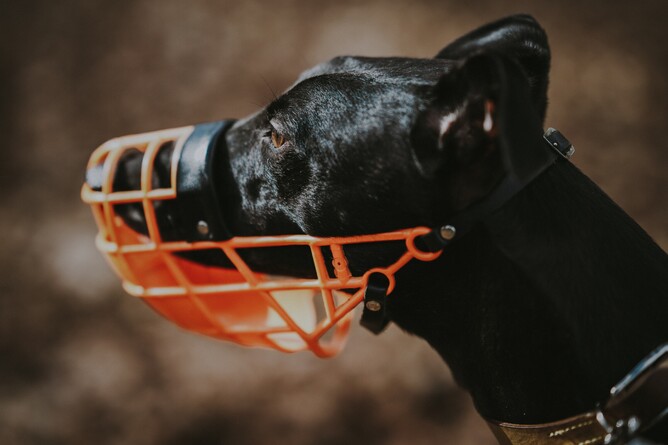Why We Love Muzzles
Times have changed – muzzles no longer predict big vicious snarling dogs. A muzzled dog is not a bad dog, and may not even be a dog that bites. However it is a dog whose people are being proactive and safe.
Why Muzzle Train Your Dog?
Muzzles are an important piece of safety equipment for all dogs. The most even tempered, friendly dog can still become dangerous if injured, sick or scared. Most commonly we recommend for some dogs to wear a muzzle at the vets. Some dogs can become extremely fearful at the vets, so it is important that all people working with the dog can remain safe.
Conditioning to the Muzzle
It is important for dogs to be conditioned to wearing muzzles, so they become used to wearing them - like putting on a collar or harness – it’s no big deal, and they get yummy treats too. Being proactive and teaching your dog to love their muzzle before your next vet visit will minimize the handling, and/or the restraint by the vet staff.
Recommended Muzzles
We recommend a Baskerville Muzzle. It allows the dog to pant, drink water and take treats. ⚠ Note: If your aim is to prevent your dog from taking baits, another type of muzzle where your dog can’t eat or drink will be necessary.
Muzzle Training Tips
Always use positive methods to get your dog used to wearing a muzzle
Only use a basket style muzzle so your dog can breathe, take treats and drink water (never use cloth or ‘grooming’ muzzles)
Ensure the correct fit
Move at your dog's pace. In other words, take your time. Rushing past important steps can set you back and training will then take longer.
Use really good, high-value food treats. You want your dog to believe the muzzle is really fun and reinforcing (cooked chicken or beef work well!)
Stay at each step until your dog is successful (5-20 trials) and then move on to the next step.
Your dog should look comfortable and ready for another repetition at each level before moving to the next level.
Muzzles should never be used as a punishment device
Teaching Your Dog To Wear a Muzzle
1. Muzzle predicts good things! Bring the muzzle out and let your dog investigate it. Place it on the floor and start giving your dog treats for coming close to the muzzle. Repeat many times, until your dog is really happy to see the muzzle come out!
2. Teaching your dog to put her face in the muzzle Hold the muzzle face up in your hand, and place a few treats just on the edge of the muzzle. Your dog has to put his nose just in to get the treats. Repeat many times!
3. Gradually put the treats back a bit further into the muzzle so your dog has to put her face in the muzzle to get the treats. Repeat, repeat! Treats: squeeze tubes, yummy treats. Squeeze tubes filled with a yummy mix are excellent for continual reinforcement.
4. Fastening the muzzle Once your dog is comfortable putting her face right in the muzzle, reach around the put the straps together, but only for a second. Then release. You may need a second person to help here. One person feeding treats, the other fastening the straps. Gradually increase the time you fasten the straps for.
Chin Rest
Teaching your dog to be calm, and do a ‘chin rest’ behaviour can be very beneficial when teaching your dog to wear a muzzle. The following link is a great video by Emily Larlham from Kikopup: Muzzle Training
Your dog is not a bad dog if they need to wear a muzzle. You are being proactive, responsible and safe.

